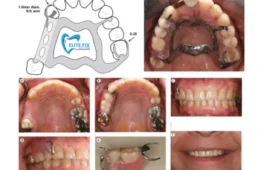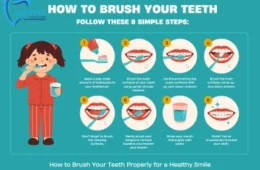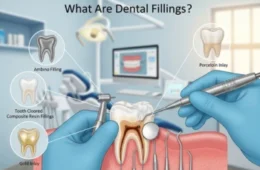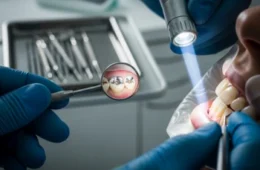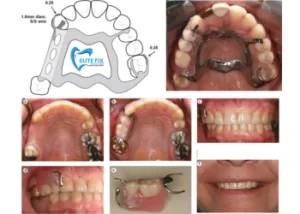
Partial Dentures for Back Teeth
Missing back teeth can disrupt your daily life, from chewing your favorite meals to speaking confidently. At EliteFixDenture, we understand this challenge. Partial dentures offer a practical way to fill those gaps, helping you regain comfort and function. Let’s explore what you need to know.
Things to Know About Partial Dentures for Back Teeth
Partial dentures target posterior (back) areas, replacing molars or premolars lost to decay, injury, or gum disease. They preserve your natural teeth while restoring balance to your bite.
- Can you get a partial denture for back teeth? Yes, dentists design these specifically for posterior sections, ensuring stability for everyday use.
- Can you eat with back partials? Absolutely. They boost chewing efficiency, though you may start with softer foods during adjustment.
- What are the best dentures for back teeth? Implant-supported options provide superior stability for heavy chewing forces.
In Chicago’s dry winter air, hydrate your mouth often to prevent irritation—especially helpful in bustling neighborhoods like Lincoln Park.
How Do Partial Dentures for Back Teeth Work?
Partial dentures fit snugly over your gums and clasp onto nearby healthy teeth. The prosthetic teeth mimic natural ones, attached to a lightweight base that rests on your jaw ridge.
You insert them easily each morning, like a retainer. They distribute bite forces evenly, easing strain on remaining teeth. Remove them nightly for cleaning to protect your oral health.
As Dr. Aziz Liaquat, our implant dentistry specialist, notes, proper fit ensures seamless integration with your smile.
Types of Partial Dentures for Back Teeth
Choose from options tailored to your needs. Here’s a quick comparison:
| Type | Description | Best For Back Teeth? | Cost Range (Estimate) |
| Conventional (Clasp) | Metal or acrylic base with clasps on adjacent teeth for support. | Yes, for basic stability. | $300–$2,500 |
| Flexible (Nylon) | Thin, gum-colored thermoplastic; no visible metal. | Excellent; lightweight and comfortable. | $700–$3,000 |
| Immediate/Temporary | Worn right after extraction; acrylic flipper-style. | Short-term bridge to permanent. | $300–$500 |
| Implant-Supported | Snaps onto jaw implants for secure hold. | Ideal; minimizes shifting during meals. | $1,500–$10,000+ |
For Lakeview residents seeking durability, flexible or implant types shine in active lifestyles.
Potential Drawbacks of Partial Dentures for Back Teeth
No solution is perfect, but awareness helps. Partial dentures may shift initially, causing minor discomfort or speech slips. They require daily cleaning to avoid plaque buildup on gums.
Over time, jawbone changes can loosen fit, needing relines. Allergies to metals affect a small percentage—opt for flexible alternatives then. In winter, cold weather might heighten sensitivity; warm soaks ease this.
How Long Do Partial Dentures for Back Teeth Typically Last?
With diligent care, expect 5–10 years of service. Metal-framed ones endure longer than acrylic, but reline every 1–2 years as gums adapt.
Factors like diet and hygiene play key roles. Visit your dentist biannually for checks—vital in Chicago’s fast-paced routine.
What Does a Partial Look Like for Back Teeth?
These blend naturally: tooth-colored prosthetics sit on a pink gum base, often invisible from the front. Clasps hug neighboring teeth discreetly.
Flexible versions curve softly, feeling barely there. For a peek at care tips, see the American Dental Association’s denture guide.
Benefits of Partial Dentures for Missing Back Teeth
Partial dentures transform how you enjoy life. They restore full chewing power, so you savor Lakeview’s diverse eateries without worry. Key perks include:
- Enhanced Chewing: Bite into firm foods easily, improving nutrition and digestion.
- Speech Clarity: Say goodbye to mumbling from gaps; speak freely at neighborhood events.
- Smile Protection: Halt tooth migration, preserving your natural alignment.
- Affordable Restore: Costs start around $300–$500, often covered partly by insurance.
- Quick Adjustment: Feel natural within weeks, with minimal disruption.
These benefits shine in Chicago’s crisp air, where dry mouths from heaters can strain gums—partial dentures help keep things balanced.
FAQs: Partial Dentures for Back Teeth
Q: Are partial dentures painful at first?
A: Mild soreness is common during the 1–2 week adjustment. Soft foods and over-the-counter relief help.
Q: How do I clean back partials?
A: Brush daily with mild soap, soak overnight, and rinse after meals to prevent stains.
Q: Can partials prevent further tooth loss?
A: Yes, they stabilize your bite and reduce shifting of remaining teeth.
Q: What’s the difference between partials and bridges?
A: Partials are removable; bridges are fixed to adjacent teeth for permanence.
Q: Do insurance plans cover back partials?
A: Many do, partially—check your policy for details.
Q: How soon after extraction can I get one?
A: Immediate options fit same-day; permanents follow after 6 months of healing.
Q: Can kids use partials for back teeth?
A: Rarely, as young jaws grow; consult for custom solutions.
Q: Winter tips for Chicago partial wearers?
A: Use humidifiers in Lincoln Park homes to combat dry air and maintain comfort.
This article provides general information only and is not a substitute for professional dental advice. Consult your dentist for personalized guidance.
For expert dental care in Chicago, visit EliteFixDenture.com.

